History GK From IAS Exam 1998:
1. The Ashoka major rock edicts which tell us about the Sangam Kingdom include rock edicts
(A) I and X
(B) I and XI
(C) II and XIII
(D) II and XIV
Ans: II and XIII (C)
2. Which of the following pairs are correctly matched?
(1) Lothal: Ancient dockyard
(2) Sarnath: First Sermon of Buddha
(3) Rajgir: Lion capital of Ashoka
(4) Nalanda: Great seat of Buddhist leraning
Select the correct answer using the code given below:
(A) 1, 2, 3 and 4
(B) 3 and 4
(C) 1, 2 and 4
(D) 1 and 2
Ans: 1, 2 and 4 (C)
3. The concept of Eightfold path forms the theme of
(A) Dipavamsa
(B) Divyavadana
(C) Mahaparinirvana Sutta
(D) Dharma Chakara Pravartana Sutta
Ans: Dharma Chakara Pravartana Sutta (D)
4. What is the correct chronological order in which the following appeared in India?
(1) Gold Coins
(2) Punch marked silver coins
(3) Iron plough
(4) Urban culture
Select the correct answer using the code given below:
(A) 3, 4, 1, 2
(B) 3, 4, 2, 1
(C) 4, 3, 1, 2
(D) 4, 3, 2, 1
Ans: 4, 3, 2, 1 (D)
5. Which one of the following ancient Indian records is the earliest royal order to preserve food-grains to be utilized during the crises in the country?
(A) Sohgaura Copper-plate
(B) Rummindei Pillar-edict of Ashoka
(C) Prayag-prasasti
(D) Mehrauli Pillar inscription of Chandra
Ans: Sohgaura Copper-plate (A)
6. Many of the Greeks, Kushanas, and Shakas embraced Buddhism rather than Hinduism because
(A) Buddhism was in the ascendant at that time
(B) they had renounced the policy of war and violence
(C) caste-ridden Hinduism did not attract them
(D) Buddhism provided easier access to Indian society
Ans: caste-ridden Hinduism did not attract them (C)
7. Which of the following pairs are correctly matched?
(1) Mrichchakatikam- Shudraka
(2) Buddhacharita- Vasuvandhu
(3) Mudrarakshasha- Vishakadatta
(4) Harshacharita- Banabhatta
Select the correct answer using the code given below:
(A) 1, 2, 3 and 4
(B) 1, 3 and 4
(C) 1 and 4
(D) 2 and 3
Ans: 1, 3 and 4 (B)
8. The member of Shivaji’s Ashtapradhan who looked after foreign affairs was
(A) Peshwa
(B) Sachiv
(C) Pandit Rao
(D) Sumant
Ans: Sumant (D)
9. Fawazil in the Sultanate period meant
(A) extra payment to the nobles
(B) revenue assigned in lieu of salary
(C) excess amount paid to the exchequer by the Iqtadars
(D) illegal exactions extracted from the peasants
Ans: excess amount paid to the exchequer by the Iqtadars (C)
10. The loss of Qandhar was a big blow to the Mughal empire from the view point of
(A) natural resources
(B) buffer territory
(C) communication
(D) strategic stronghold
Ans: strategic stronghold (D)
11. Sultan of Delhi who is reputed to have built the biggest network of canals in India was
(A) Iltutmish
(B) Ghiyasuddin Tughlaq
(C) Firoz Shah Tughlaq
(D) Sikander Lodi
Ans: Firoz Shah Tughlaq (C)
12. Match List-I with List-II and select the correct answer using the codes given below the lists
| List-I | List-II |
|---|---|
| (A) 1556 | (1) Battle of Haldi Ghati |
| (B) 1600 | (2) Nadir Shah’s capture of Delhi |
| (C) 1686 | (3) Death of Shivaji |
| (D) 1739 | (4) Grant of Charter to East India Company |
| (5) Accession of Akbar |
Codes:
(A) A-3; B-4; C-2; D-1
(B) A-5; B-4; C-3; D-2
(C) A-5; B-2; C-1; D-4
(D) A-1; B-5; C-3; D-2
Ans: A-5; B-4; C-3; D-2 (B)
13. Consider the following statements: Ahadis were those troopers who
(1) offered their services singly
(2) did not attach themselves to any chief
(3) had the emperor as their immediate colonel
(4) attached themselves to Mirzas
Of these statements:
(A) 1, 3 and 4 are correct
(B) 1, 2 and 3 are correct
(C) 2 and 3 are correct
(D) 1 and 4 are correct
Ans: 1, 2 and 3 are correct (B)
14. Consider the following:
(1) Tughlaqabad fort
(2) Lodi Garden
(3) Qutab Minar
(4) Fatehpur Sikri
The correct chronological order in which they were built is:
(A) 3, 1, 4, 2
(B) 3, 1, 2, 4
(C) 1, 3, 2, 4
(D) 1, 3, 4, 2
Ans: 3, 1, 2, 4 (B)
15. “The Congress is tottering to its fall and one of my great ambitions while in India, is to assist it to a peaceful demise.” This statement is attributed to
(A) Lord Dufferin
(B) Lord Curzon
(C) Lord Lytton
(D) None of the above
Ans: Lord Curzon (B)
16. Who was the leader of the Ghadar Party?
(A) Bhagat Singh
(B) Lala Hardayal
(C) Bal Gangadhar Tilak
(D) V.D.Savarkar
Ans: Lala Hardayal (B)
17. Lord Mountbatten came to India as a Viceroy with specific instruction to
(A) balkanize the Indian sub-continent
(B) keep India united if possible
(C) accept Jinnah’s demand for Pakistan
(D) persuade the Congress to accept the partition
Ans: keep India united if possible (B)
18. The educated middle class in India:
(A) opposed the revolt of 1857
(B) supported the revolt of 1857
(C) remained neutral to the revolt of 1857
(D) fought against native rulers
Ans: remained neutral to the revolt of 1857 (C)
19. The Indian National Congress agreed in 1947 to the partition of the country mainly because
(A) the principle of two Nation theory was then acceptable to them
(B) it was imposed by the British Government and the Congress was helpless in this regard
(C) they wanted to avoid large-scale communal riots
(D) India would have otherwise lost the opportunity to attain freedom
Ans: they wanted to avoid large-scale communal riots (C)
20. At the time of India’s Independence, Mahatma Gandhi was
(A) a member of Congress working Committee
(B) not a member of the Congress
(C) the President of the Congress
(D) the General Secretary of the Congress
Ans: not a member of the Congress (B)
21. When the Indian Muslim League was inducted into the interim government in 1946, Liaquat Ali Khan was assigned the portfolio of
(A) foreign affairs
(B) home
(C) finance
(D) defence
Ans: finance (C)
22. Simon Commission of 1927 was boycotted because
(A) there was no Indian Member in the Commission
(B) it supported the Muslim League
(C) Congress felt that the people of India are entitled to Swaraj
(D) there were differences among the members
Ans: there was no Indian Member in the Commission (A)
23. The Indian Muslims, in general, were not attracted to the Extremist movement because of
(A) influence of the Sir Sayed Ahmed Khan
(B) anti-Muslim attitude of extremist leaders
(C) indifference shown to Muslim aspirations
(D) extremists policy of harping on Hindu past
Ans: extremists policy of harping on Hindu past (D)
24. Which one of the following events, was characterized by Montague as ‘Preventive Murder’?
(A) Killing of INA activists
(B) Massacre of Jallianwalla Bagh
(C) Shooting of the Mahatma
(D) Shooting of Curzon-Wythe
Ans: Massacre of Jallianwalla Bagh (B)
25. What is the correct sequence of the following events?
(1) Tilak’s Home Rule League
(2) Karnagatamaru Incident
(3) Mahatma’s Gandhi arrival in India
Select the correct answer using the code given below:
(A) 1, 2, 3
(B) 3, 2, 1
(C) 2, 1, 3
(D) 2, 3, 1
Ans: 2, 3, 1 (D)
26. What is the correct sequence of the following events?
(1) The August offer
(2) The INA trial
(3) The Quit India Movement
(4) The Royal Indian Naval Ratings Revolt
Select the correct answer using the code given below:
(A) 1, 3, 2, 4
(B) 3, 1, 2, 4
(C) 1, 3, 4, 2
(D) 3, 1, 4, 2
Ans: 1, 3, 2, 4 (A)
27. Which of the following pairs are correctly matched?
(1) Theodore Beck: Mohammedan Anglo Oriental College, Aligarh
(2) Ilbert Bill: Ripon
(3) Pherozshah Mehta: Indian National Congress
(4) Badruddin Tyabji: Muslim League
Select the correct answer using the code given below:
(A) 1, 2, 3 and 4
(B) 2 and 4
(C) 1, 3 and 4
(D) 1, 2 and 3
Ans: 1, 2 and 3 (D)
28. Which one of the following defines extremist ideology during the early phase of Indian freedom movement?
(A) Stimulating the production of indigenous articles by giving them preference over imported commodities
(B) Obtaining self government by aggressive means in place of petitions and constitutional ways
(C) Providing national education according to the requirements of the country
(D) Organising coups against the British Empire through military revolt
Ans: Obtaining self government by aggressive means in place of petitions and constitutional ways (B)
- Montagu Declaration or August Declaration [1917]
- Montagu-Chelmsford Reforms or the Government of India Act 1919
- Rowlatt Act, 1919
- Jallianwala Bagh Massacre [April 13, 1919]
- The Khilafat Movement, 1919-1920
- The Non-Cooperation Movement (1920-22)
- Simon Commission, 1927
- Gandhi-Irwin Pact: March 5, 1931
- Download Evolution of state in India NIOS Book
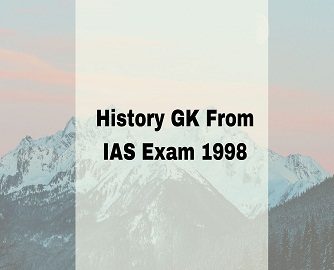

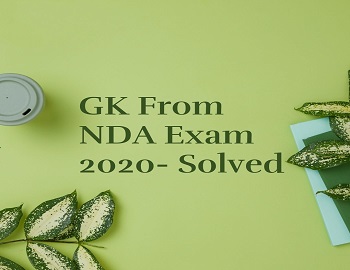
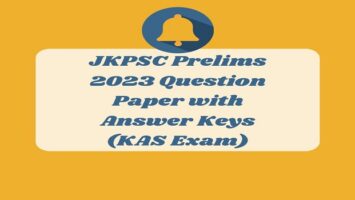
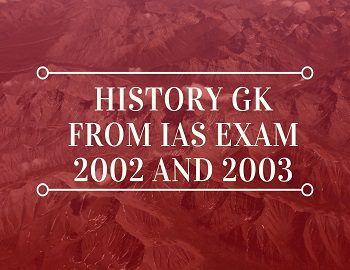
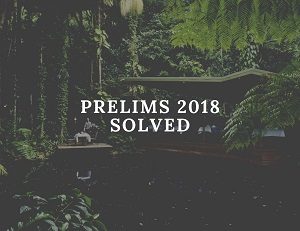

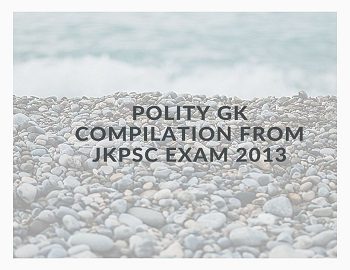
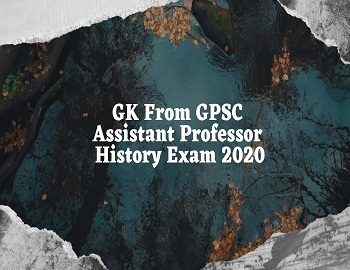
Comments (No)